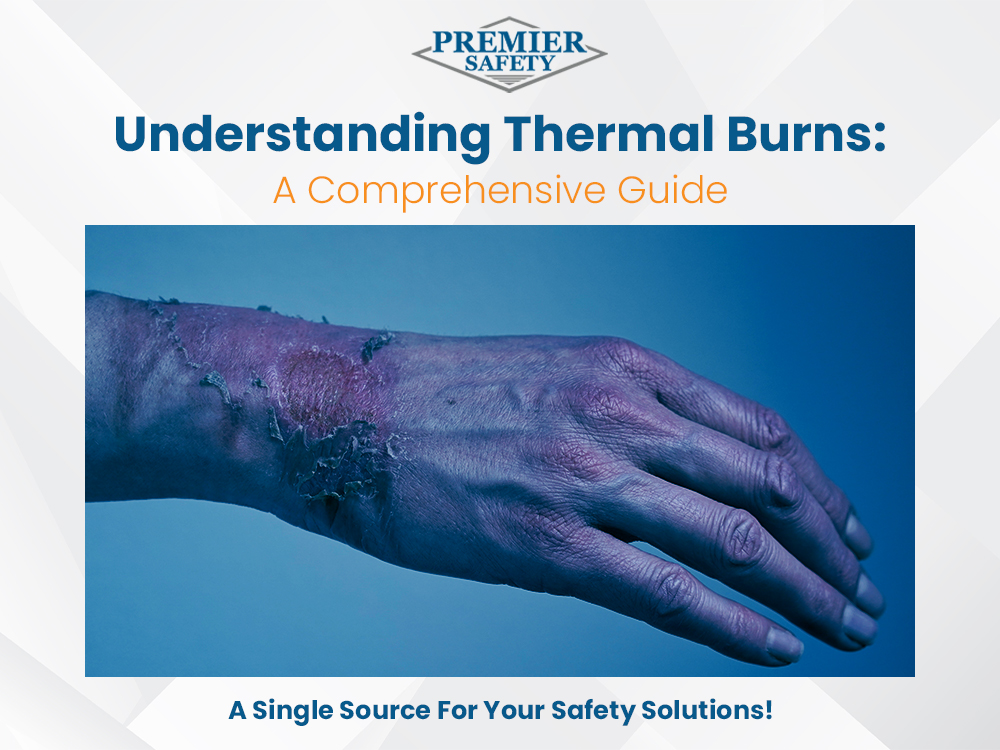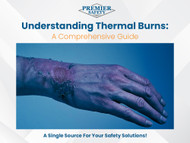Understanding Thermal Burns: A Comprehensive Guide
Posted by Michael Womack - Premier Safety on Feb 5th 2024

An unfortunate reality for many, can occur in various situations, ranging from domestic mishaps to workplace accidents. This guide explains thermal burns, including causes, symptoms, treatments, and prevention. It aims to simplify the topic.
Come join us as we delve into the specifics of this crucial topic. We will provide you with valuable information to navigate the challenges.
Unveiling Thermal Burn Causes
Hot Surfaces and Machinery:
One of the primary culprits is direct contact with hot surfaces or machinery. Whether in an industrial setting or at home, encountering overheated objects can lead to severe burns.
Scalding Liquids:
Handling hot liquids can cause scalding injuries, even if they seem harmless, like boiling water or scalding drinks. Vigilance is key in avoiding accidental spills and burns.
Steam Exposure:
The invisible force of steam, often used in industrial processes, can cause thermal injury upon accidental exposure. Understanding the potential burn complications and implementing safety measures is crucial in steam-rich environments.
Flame-Related Incidents:
Flames, whether from a kitchen mishap or a workplace fire, pose a significant threat. Burn injuries from flames require immediate attention, emphasizing the importance of fire safety protocols.
Signs and Symptoms of Thermal Burns
Redness and Swelling:
The immediate aftermath of a thermal burn often includes redness and swelling in the affected area. Recognizing these early signs is crucial for prompt intervention.
Blister Formation:
As the burn progresses, blister formation is common. Understanding the severity of the burn based on blister size is essential for appropriate medical care.
Pain and Discomfort:
Pain and discomfort accompany skin burns. Recognizing the level of pain can also indicate the extent of the burn and guide treatment decisions.
Seeking Treatment
First Aid Measures:
Immediate first aid is essential in managing thermal burns. To treat a burn, cool it with lukewarm water, cover it with a clean cloth, and get emergency burn care.
Medical Interventions:
Severe thermal burns may require medical interventions, such as debridement, skin grafts, or specialized burn treatment. Consulting with healthcare professionals ensures the best possible outcome.
Prevention is Key
Safety Protocols:
Implementing safety protocols is paramount in preventing heat-related injuries. Whether at home or in the workplace, understanding and following safety guidelines can significantly reduce the risk.
Protective Gear:
Wearing appropriate protective gear is essential. Heat-resistant clothing, gloves, and face shields provide a crucial layer of burn prevention.
Educational Initiatives:
Educating individuals about risks and burn preventive measures creates awareness. Workshops, training sessions, and informative campaigns contribute to a safer environment.
Conclusion
In conclusion, navigating the landscape of thermal burns requires a comprehensive understanding of causes, symptoms, treatments, and preventive measures. Stay informed, be safe, and reduce the risk of burns to make the community safer.
Frequently Asked Questions
1. What are the immediate steps to take after a thermal burn?
For a burn, use lukewarm water, cover with clean cloth, and see a doctor quickly.
Can you treat thermal burns at home?
You can treat minor burns at home, but seek medical help if the burn is serious.
3. How can workplaces reduce the risk of thermal burns?
Workplaces can avoid burns by following safety rules, providing protective gear, training regularly, and displaying clear burn classification signs.
4. Are all thermal burns visible immediately?
No, some thermal burns may take time to manifest symptoms. Redness, swelling, and blister formation can occur over time.
5. Is there a specific type of clothing that can prevent thermal burns?
Heat-resistant clothing, including flame-resistant coveralls and gloves, is effective in preventing thermal burns in high-risk environments.

